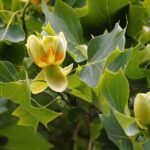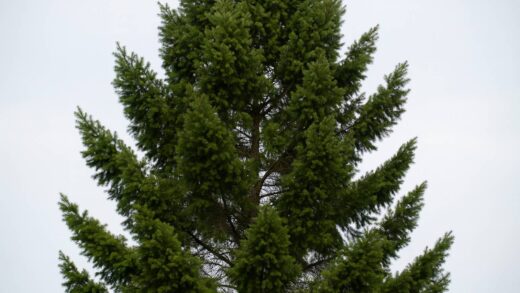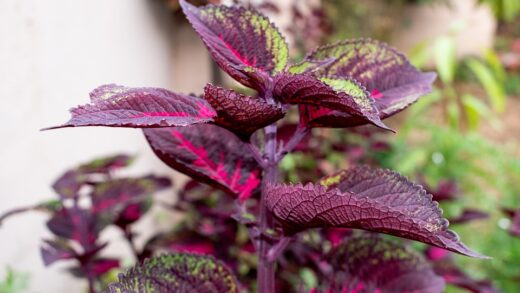Successfully wintering lily of the valley is a process that relies more on proper preparation and an understanding of the plant’s natural life cycle than on intensive intervention. This hardy perennial is well-adapted to cold climates, having evolved in temperate woodland environments with distinct seasons. Its survival strategy is to retreat below ground, with all of its energy safely stored in its resilient rhizomes, while the foliage above ground dies back completely. The primary goal for the gardener during this period is to provide a stable and protective environment for these dormant rhizomes, ensuring they are shielded from the most extreme winter conditions.
The process of preparing lily of the valley for winter begins in the autumn, long before the first snowflakes fall. It involves allowing the plant to complete its natural cycle of senescence, where the leaves yellow and wither, transferring their energy back to the root system. This is a critical phase, and interfering with it by cutting back the foliage too early can weaken the plant and compromise its ability to survive the winter and thrive in the spring.
While established colonies in suitable climates often require very little assistance to make it through the winter, certain practices, such as applying a protective layer of mulch, can be highly beneficial. This is especially true in regions with very cold temperatures, little insulating snow cover, or fluctuating winter weather that causes repeated freezing and thawing of the soil. Mulching helps to moderate soil temperatures and protect the shallow rhizomes from damage.
Understanding these simple but important aspects of winter care will ensure that your lily of the valley not only survives but emerges in the spring with vigor and health. A well-wintered plant is one that is ready to leap into action as the soil warms, sending up a fresh carpet of lush green leaves and a profusion of its iconic, fragrant blossoms.
The natural dormancy cycle
Understanding the natural dormancy cycle of lily of the valley is the key to its winter care. This plant is a spring ephemeral, meaning that the majority of its active growth, flowering, and energy production occurs in the spring and early summer. As late summer and autumn approach, the plant begins to prepare for a period of rest. This is not a sign of sickness but a crucial survival strategy evolved to cope with the freezing temperatures and harsh conditions of winter.
More articles on this topic
During the autumn, you will observe the leaves gradually losing their vibrant green color, turning yellow and then brown before withering away. This process, known as senescence, is an active and organized shutdown. The plant is efficiently reabsorbing valuable nutrients, such as nitrogen and phosphorus, from the leaves and moving them down into the underground rhizomes for storage. This stored energy is what will fuel the initial burst of growth the following spring.
It is absolutely vital to allow this process to complete naturally. Many gardeners feel an urge to tidy up the garden by cutting back yellowing foliage, but for lily of the valley, this would be a mistake. Removing the leaves while they are still partially green would be like taking food away from the plant just as it is trying to store it for the winter. This can significantly weaken the rhizomes, leading to reduced vigor and fewer flowers in the next season.
Once the foliage has completely died back and is brown and dry, the plant is fully dormant. The rhizomes, resting just below the soil surface, are now the plant’s life-support system. They are remarkably tough and contain specialized compounds that act as a natural antifreeze, allowing them to withstand freezing temperatures. The gardener’s role now shifts from active care to providing passive protection for these dormant structures.
Preparing the garden bed for winter
As autumn progresses and the lily of the valley foliage begins its natural decline, a few simple steps can be taken to prepare the garden bed for the coming winter. The most important task is a final cleanup of the area. Once the plant’s leaves have completely browned and withered, they can be gently raked off and removed. This helps to improve garden sanitation by removing any material that could potentially harbor fungal spores or the eggs of pests over the winter.
More articles on this topic
While cleaning up the dead foliage, it is also a good time to do a final weeding of the bed. Removing any perennial weeds before the ground freezes will give your lily of the valley less competition when it emerges in the spring. This autumn cleanup results in a tidy appearance and reduces the amount of work that will need to be done at the start of the next busy growing season.
This is also an opportune time to assess the spread of your lily of the valley colony. If the patch has become overly crowded or is expanding into areas where it is not wanted, late autumn is the ideal time to divide the clumps. Digging up and transplanting sections of the rhizomes after the plant has gone dormant minimizes stress and allows the new divisions to settle into their new location before winter fully sets in.
Finally, ensure that the area has good drainage. Winter is often a wet season, and while lily of the valley likes moist soil, it cannot tolerate sitting in stagnant, waterlogged conditions, which can cause the dormant rhizomes to rot. If you notice that water tends to pool in the area, take steps to improve the drainage by amending the soil with organic matter or creating a slight slope to help guide excess water away from the bed.
The benefits of winter mulching
Applying a layer of mulch over the lily of the valley bed is one of the most beneficial actions you can take to protect the plants during winter. The primary purpose of winter mulch is not to keep the ground warm, but rather to keep it consistently cold. It acts as an insulator, shielding the soil from the fluctuations of daytime sun and nighttime freezing, which can cause the ground to heave and thaw repeatedly. This heaving action can damage the shallow rhizomes and even push them out of the soil, exposing them to harsh, drying winds.
The best time to apply winter mulch is after the first hard freeze has occurred and the ground is cold. Applying it too early, while the ground is still warm, can trap heat and moisture, potentially encouraging the rhizomes to rot or to break dormancy during a brief winter warm spell, which would make the new growth extremely vulnerable to the next freeze. Wait until winter has truly settled in.
A variety of organic materials make excellent winter mulch. Shredded leaves, particularly oak leaves which do not mat down, are a superb choice as they closely mimic the natural litter of a forest floor. Other good options include pine straw, chopped-up corn stalks, or a light layer of wood chips. Apply a loose, airy layer about two to four inches deep over the entire bed.
In the spring, as the threat of a hard frost recedes and the soil begins to warm, this winter mulch should be gently raked back or removed. This allows the sunlight to reach and warm the soil, signaling to the lily of the valley pips that it is time to start growing. Leaving a heavy layer of mulch in place for too long can delay their emergence and potentially smother the new shoots.
Special considerations for different climates
Winter care for lily of the valley can vary slightly depending on your specific climate zone. In regions with reliable and consistent winter snow cover, the plants often require no additional protection at all. Snow is an excellent natural insulator, providing a protective blanket over the soil that keeps the temperature stable and shields the rhizomes from extreme cold and drying winds. In these areas, nature provides the perfect winter mulch.
In climates with very cold winters but little to no reliable snow cover, the application of a winter mulch becomes much more important. Without the insulating layer of snow, the soil is exposed to the full force of the freezing temperatures and winds. In these situations, a four-inch layer of organic mulch is highly recommended to provide the necessary protection for the dormant rhizomes and prevent damage from frost heave.
For gardeners in milder climates where the ground may not freeze at all, winter care is minimal. The plant will still undergo its natural dormancy cycle, with the foliage dying back in the autumn. No winter mulch is needed for insulation purposes. The primary concern in these regions is to ensure that the soil does not become waterlogged during potentially rainy winter months, so good drainage remains a key factor.
Finally, it is worth noting that lily of the valley actually requires a period of cold dormancy in order to bloom properly. This process, known as vernalization, is a cold treatment that is necessary to stimulate flower production. This is why the plant does not perform well in tropical or subtropical climates that lack a distinct winter season. The cold of winter is not just something the plant endures; it is a necessary trigger for its life cycle.


















